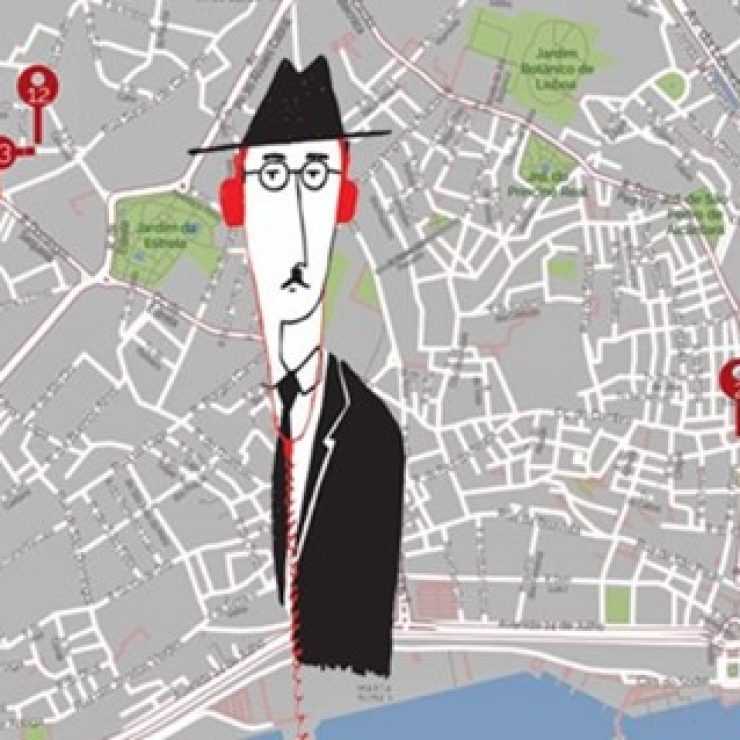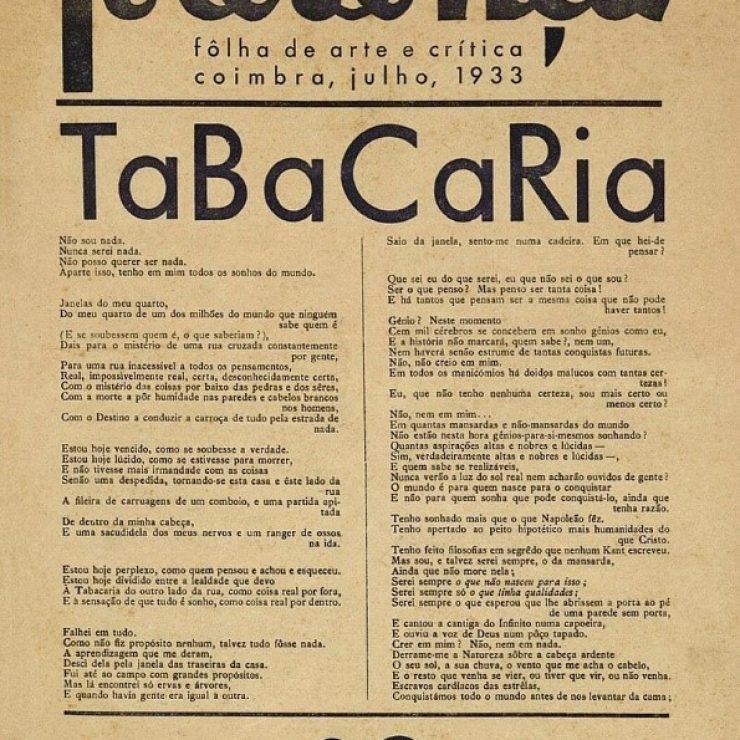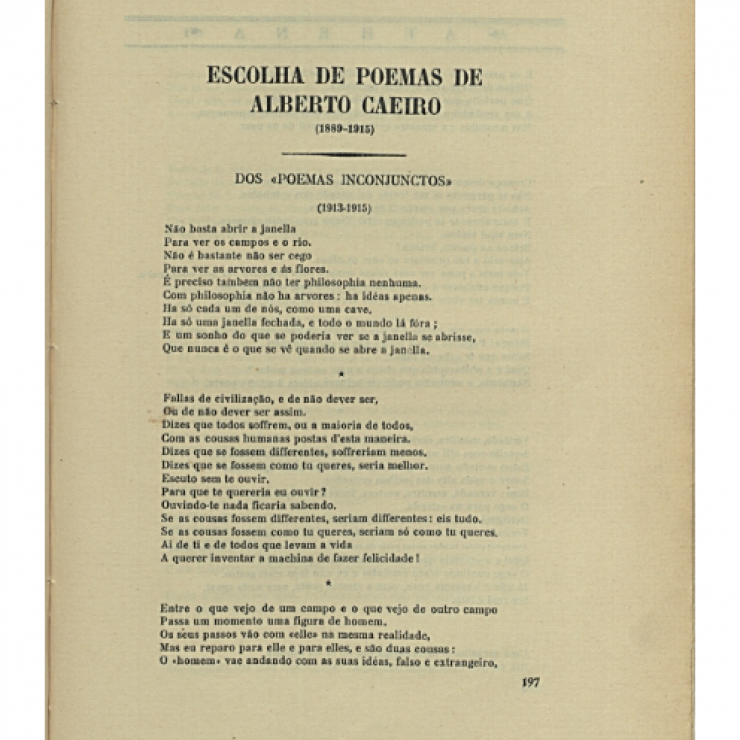1922 marks the beginning of Fernando Pessoa’s collaboration with Contemporânea, one of the most influential literary and cultural magazines of Modernism in Portugal. The writer will collaborate with the magazine until its final year of existence – 1926. It is precisely in Contemporânea that Pessoa publishes, for the first time, one of his poems that will become more famous over the following decades: “Mar Português” [“Portuguese Sea”], which will later be included, as well as other poems published on that magazine, in Message, in 1934. Furthermore, in 1922, Pessoa continued with his publishing activities, at Olisipo, a publishing house he had founded himself.
Without ignoring this last topic, an introductory overview will be presented in this article focusing on Pessoa’s participation in Contemporânea, given the importance of this magazine in the publication of some of the most important works of the Lisboan poet.
Pessoa and Contemporânea
The founder of Contemporânea was architect José Pacheco (1885-1934), the author of the cover of the first issue of Orpheu, a magazine led by Pessoa in 1915. In fact, and also in 1915, a sample issue of Contemporânea had already been published, but the first issue of the magazine comes out in 1922. Between 1922 and 1923, the editor of Contemporânea was the Algarve businessman Agostinho Fernandes. This magazine also published issues in 1924, 1925 and 1926. Pessoa collaborated, with a total of thirteen works in prose and verse, in 1922, 1923, and 1926.
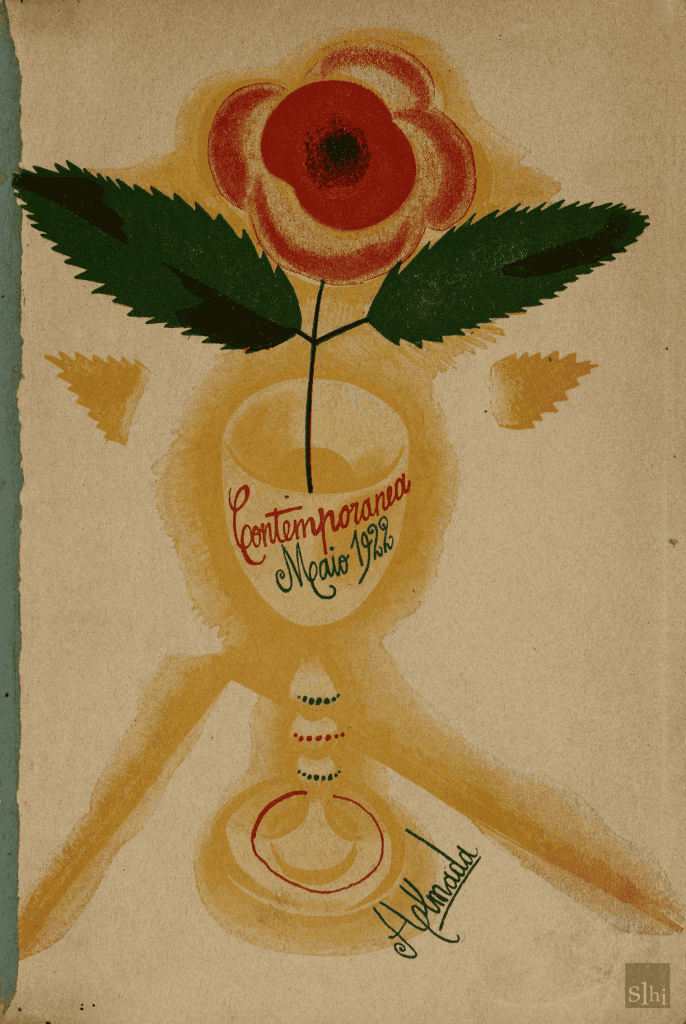
As for the aesthetical proposal of the magazine, in which other relevant 20th-century figures of Portuguese literature and art collaborated, such as António Ferro and Almada Negreiros, here is what researcher Ricardo Marques, an expert on Modernism magazines in Portugal, says:
«Contemporânea [Lit. “Contemporary”] was a magazine that wanted to be contemporary of itself. In the opening article, an open letter “to an aesthete”, there is an interesting passage that defines the intended direction and largely explains the chosen title: this is a magazine not for futurists, a negatively-charged epithet especially for the generation represented by this “aesthete”, but rather for “contemporaries”, young people of their time, who wanted to promote Portugal.»
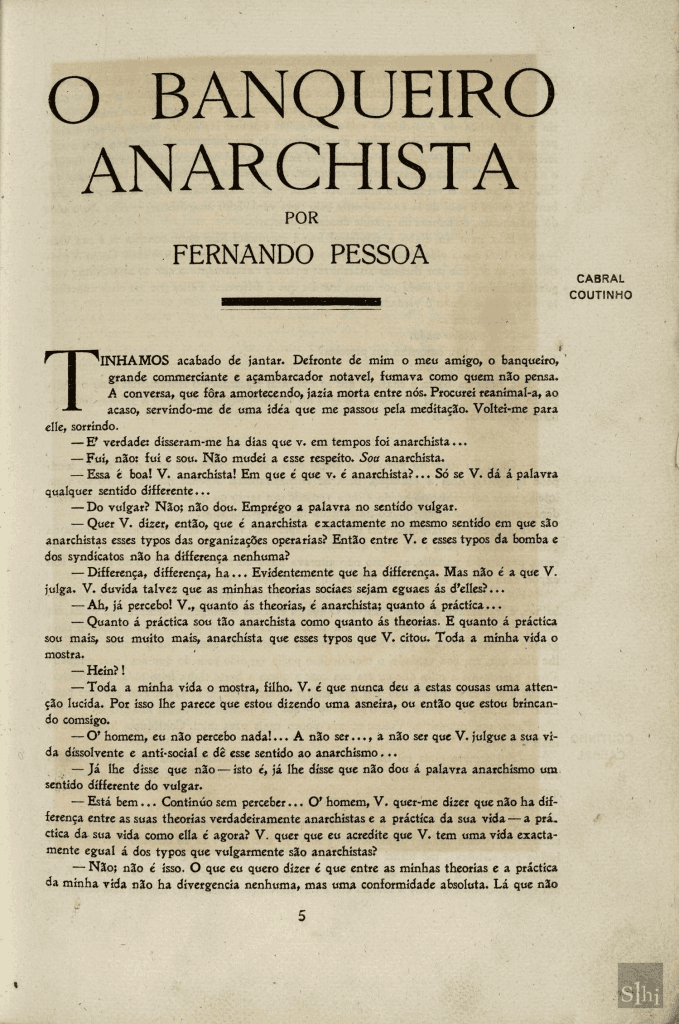
The text with which Fernando Pessoa begins collaborating with Contemporânea is an orthonym prose, a short story from January 1922 called “The Anarchist Banker”, immediately published in the magazine’s first issue, in May of the same year.
Pessoa’s last text to be published in the magazine (in the final issue of 1926, to be more specific), will be «Rubaiyat», a set of three orthonym poems, written as a tribute to and in the manner of the quatrains (in Arabic, rubāʿiyāt) of the medieval Persian poet Omar Khayyam, one of Pessoa’s great intellectual passions.
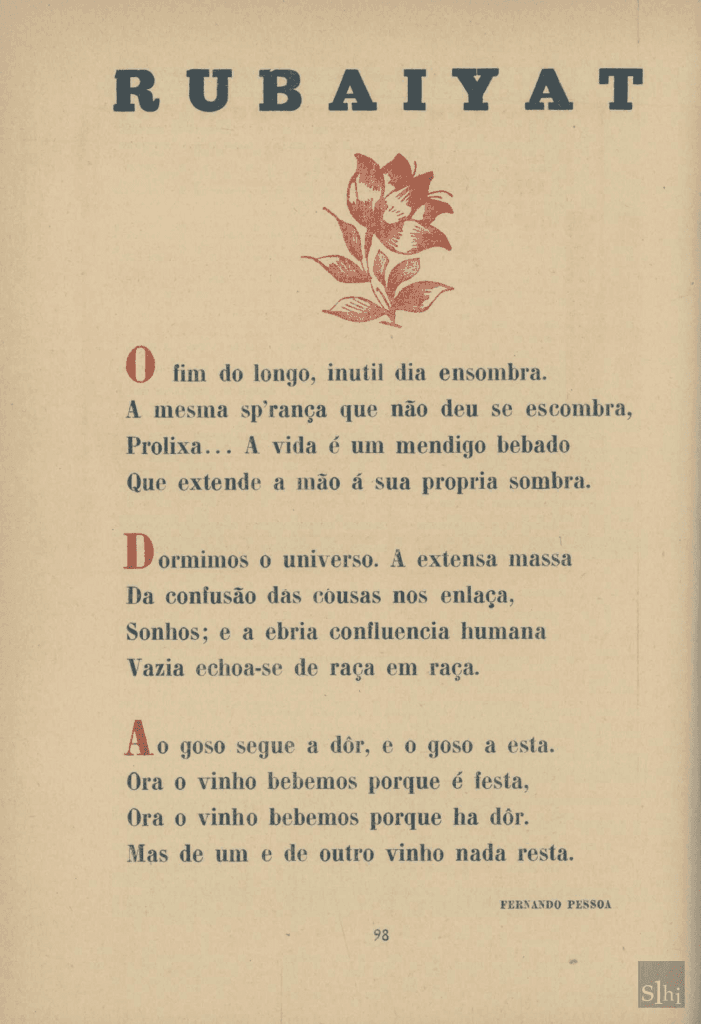
Still regarding orthonym Fernando Pessoa, that is, he-himself, a mention should be also made, among others, to a poem dedicated to «Christmas» in 1922 and also a poem in English – «Spell» – published in the Contemporânea #9, in March 1923. With these reference, one can see the variety of styles, languages, and sensibilities that Pessoa let transpire in this magazine.
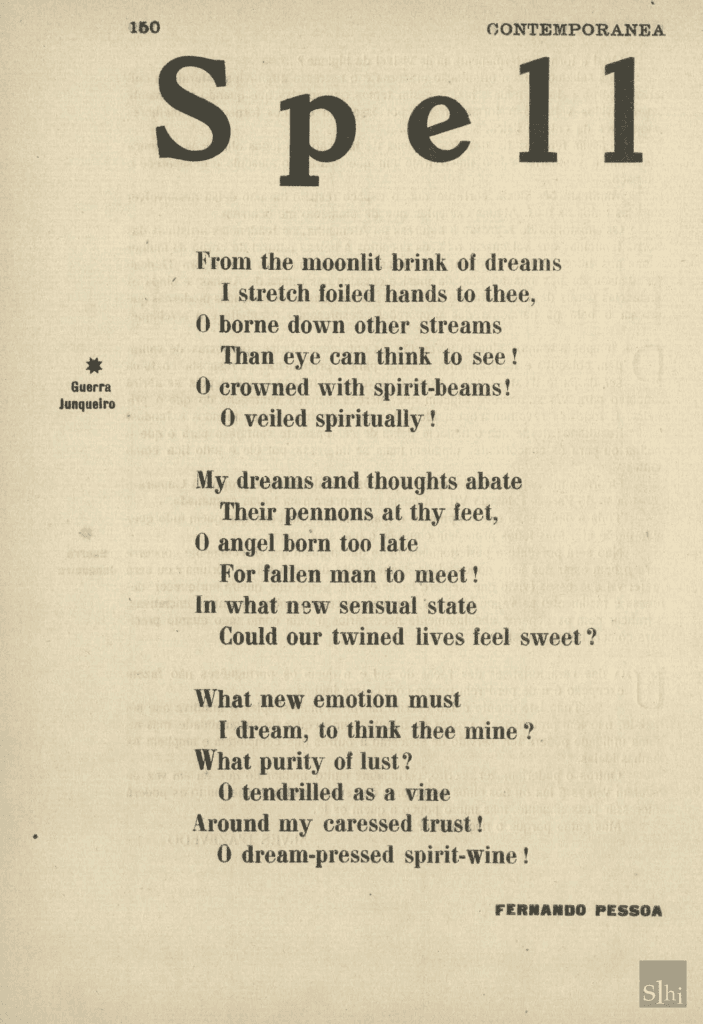
As for Pessoa’s heteronymous production, Contemporânea published several works by the cosmopolitan heteronym Álvaro de Campos, “author” namely of the two (different) poems that feature (almost) the same title, «Lisbon Revisited», published in 1923 and 1926.
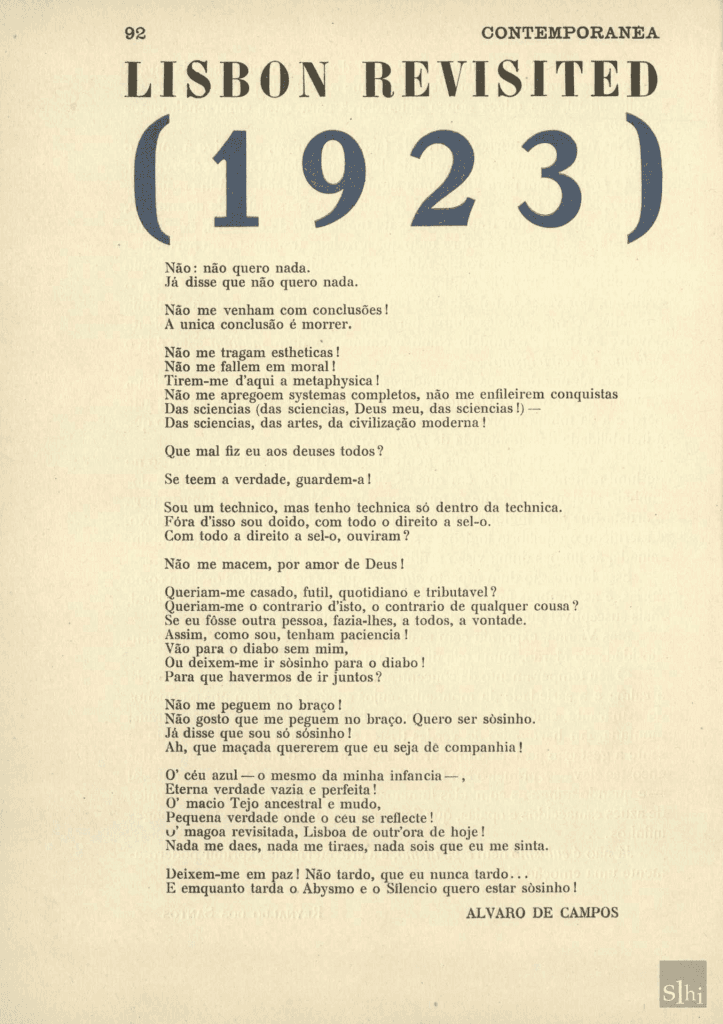
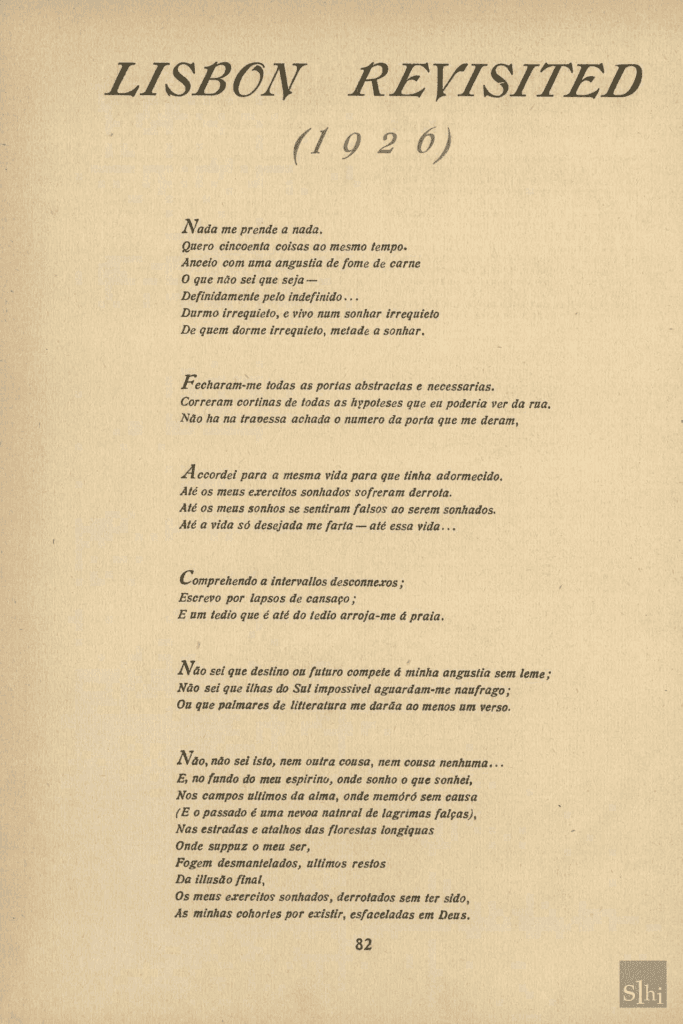
Contemporânea, # 8 (1923) and # 2 (1926)
Contemporânea undoubtedly became one of the great cultural vessels of the first generation of modernists in Portugal, hosting some of the most read and studied works of Pessoa. This is also the case, among others, of the set of twelve poems called «Portuguese Sea», with which Pessoa published several poems in 1922, some of which were published in various versions throughout the writer’s life, and eleven of which will integrate Message in 1934.
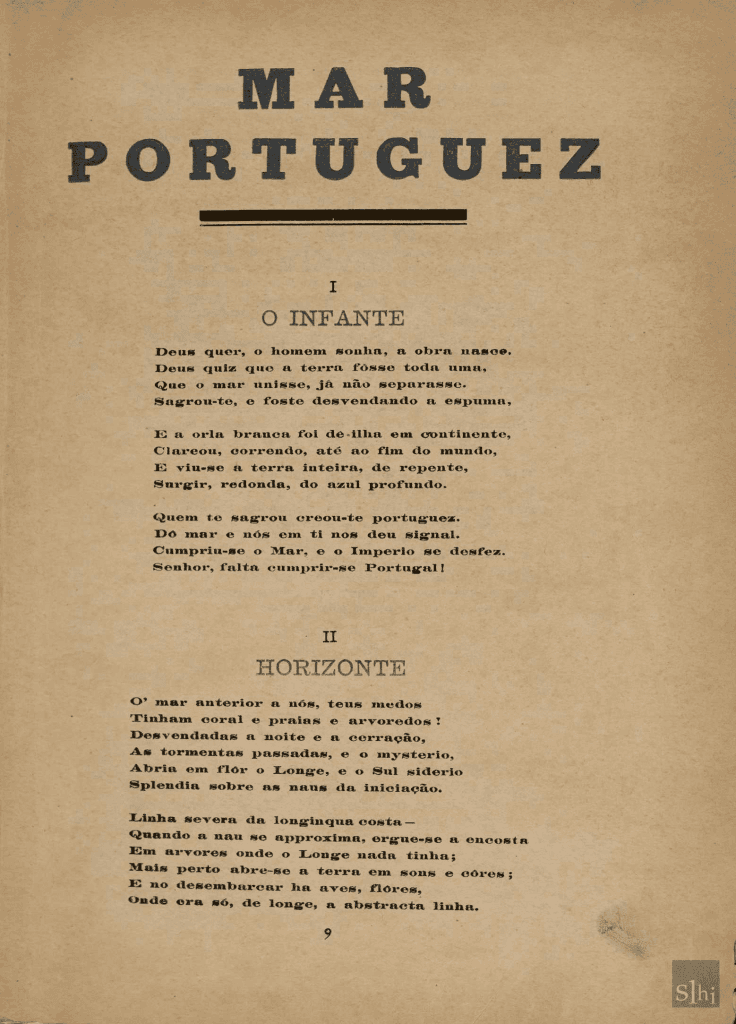
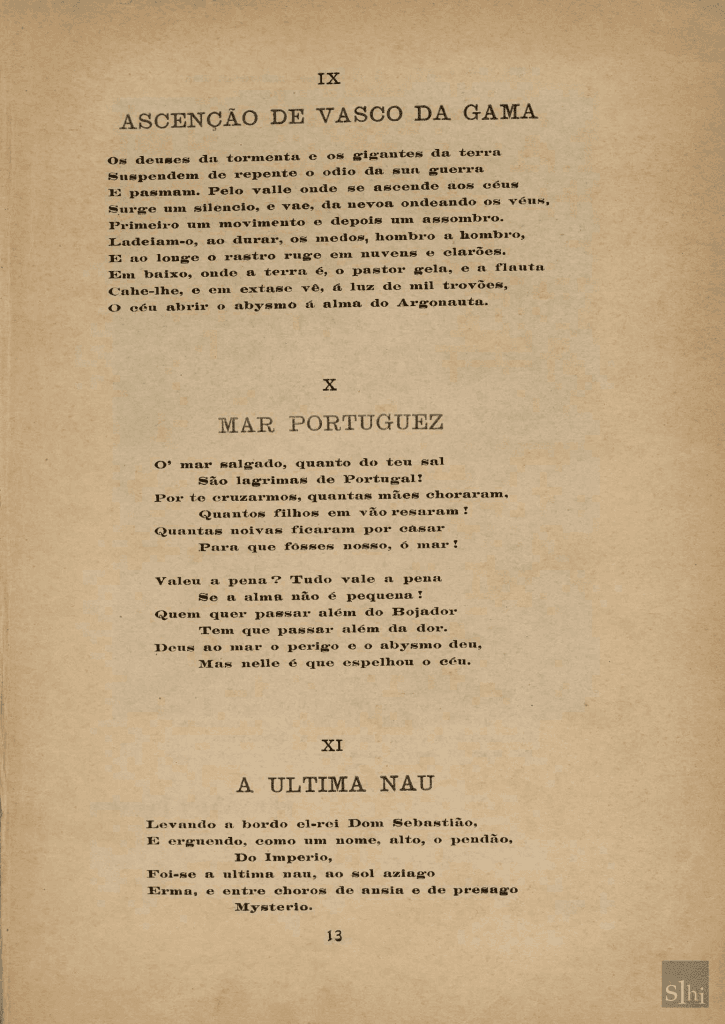
Contemporânea, # 4 (1922)
In this 1922 issue, one can read some of Pessoa’s most widely known and universal quotes, such as «God wills, man dreams, the work is born» (in the poem «Prince Henry») and «All is worthwhile / When the spirit is not small» (in the poem “Portuguese Sea”).
Pessoa, the editor and the entrepreneur
The year of 1922 also marks the continuation of the activities of the publishing house (and company) Olisipo, which Pessoa had founded in 1921 and through which, during its first year, he had published the books English Poems I-II and III (by Fernando Pessoa himself), as well as A Invenção do Dia Claro (by Almada Negreiros).
In 1922, Canções is reissued, a book by poet António Botto, first published in 1921 and whose homoerotic verses will spark up controversy in Portugal in 1923. On that same author, Fernando Pessoa will write, in that same year, the essay «António Botto e o Ideal Estético em Portugal» [António Botto and the Aesthetic Ideal in Portugal], published in issue #3 of Contemporânea.

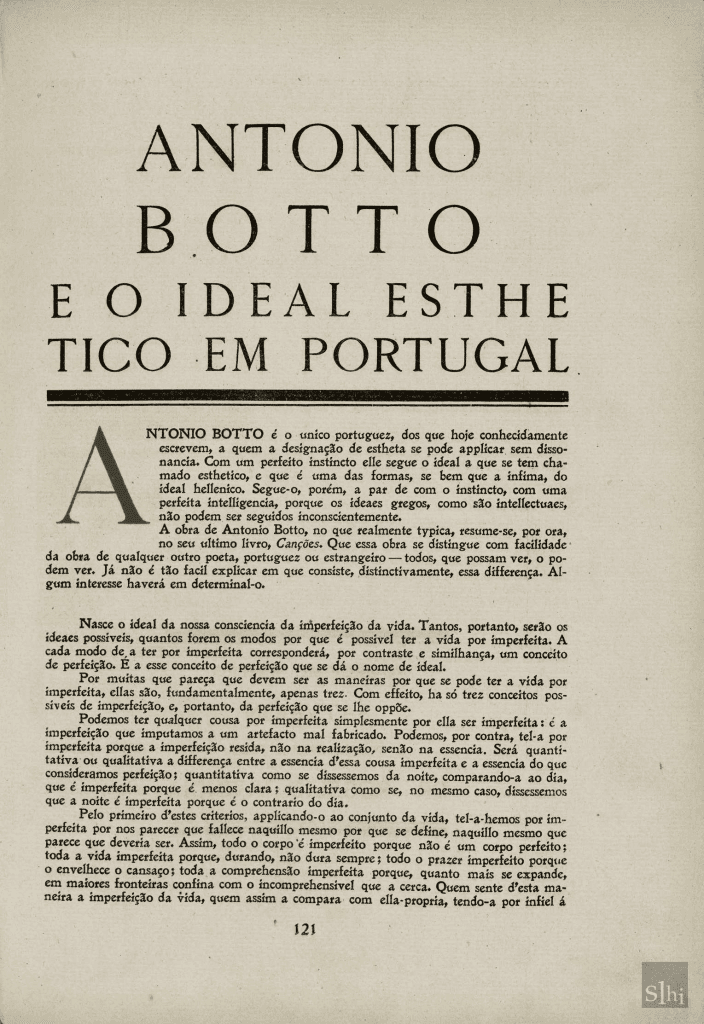
A. Botto, Canções (2nd ed., 1922) and Contemporânea, # 3 (1922)
In 1922, Olisipo moves, from Rua da Assunção (the street where, a few months earlier, Pessoa had met his girlfriend Ofélia Queirós) to Rua de São Julião, 52, «conveniently located», as stated by Pessoan biographer Richard Zenith, «two blocks from Martinho da Arcada Café, which had become the epicentre of the author’s social life»1.
During that period, Pessoa, who was constantly searching for that financial stability that writing simply couldn’t secure, continued to project other ambitious business ventures, which never came to fruition. A certain tendency towards solitude and to being unable to efficiently communicate with potential partners may have contributed to his business failures. «Only once, and in fiction, did Pessoa prove himself to be a successful businessman», writes Zenith. The biographer is talking about the aforementioned short story «The Anarchist Banker»2, the fictional story of a very wealthy banker, poles apart from where Pessoa was, from a financial point of view, in his material life.
Fabrizio Boscaglia
Notes:
(1) Richard Zenith, Pessoa: uma biografia, Lisboa, Quetzal, 2022, p. 706.
(2) Ibid., p. 708.
The images and texts of Contemporânea magazine are freely available on the Revistas de Ideias e Cultura website of Universidade Nova de Lisboa: http://ric.slhi.pt/Contemporanea
_
Discover Lisbon & Pessoa, from Lisboa Pessoa Hotel.

